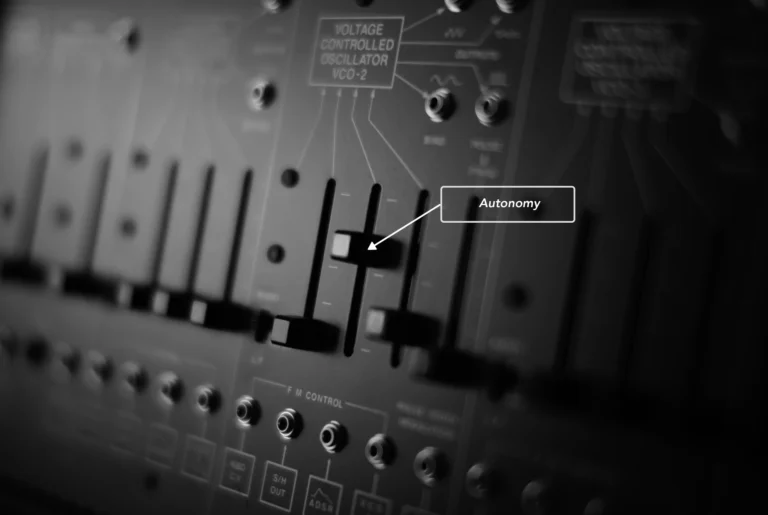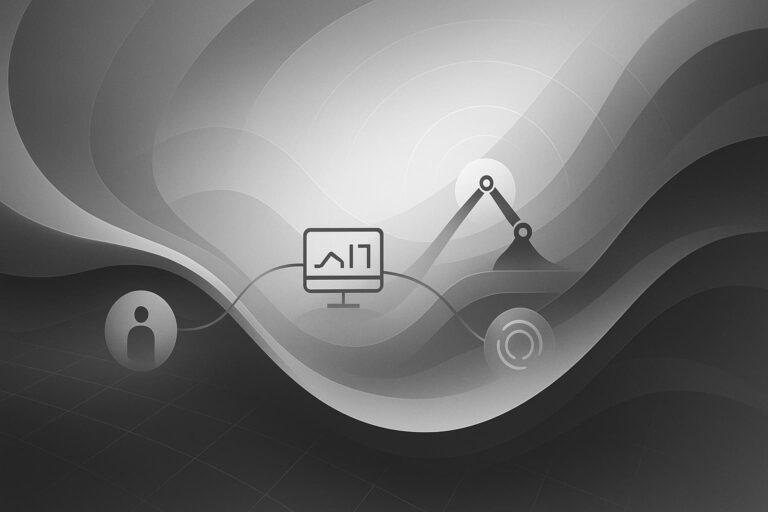Monitoring robot fleet health has resembled human health for much of history–ignored until there is enough of an impact that we finally seek help. Only then will a professional assess the available information to make a diagnosis.
Fortunately for people and robots, that is changing. Products like Fitbits or Apple watches now proactively gather health metrics for humans so they can take early action to optimize well-being and avoid adverse outcomes. Robot health metrics work the same way–robot operators and managers can proactively monitor and take necessary actions to reduce unscheduled downtime and run more efficiently.
Today, these tools exist for robots also, such as Formant, a cloud platform that helps companies deploy, monitor, and scale their fleets. Monitoring is a critical part of how we help operators optimize their fleets and other operations, so let’s take a look at some of the must-track metrics to track for your robot fleet.
Battery Health
What is battery health?
Battery health refers collectively to various metrics that indicate how well your battery is doing. Some of those metrics include:
- Battery temperature
- Battery status (charging/discharging)
- Percent charged
- Voltage
- Current (A)
- Charge (Ah)
Why is battery health an important indicator?
Batteries are the primary energy source for most mobile robots, so understanding those resource levels ensures robots have enough power for the duration of their time away from a charging station. By keeping on top of battery health, robot operators can ensure robots don’t run out of steam before tasks are completed. This is especially important in heterogeneous environments where multiple robots of different types work together. This delicate orchestration can cascade into significant productivity impacts if even one robot can’t perform as expected.
It’s also worth noting that some mobile robots have autonomous charging features, and knowing battery status can help direct robot autonomously to charging stations and charge with no human intervention.
Some battery health metrics can be viewed in combination to identify batteries reaching their end of natural life. Spotting this early provides robot operations sufficient time to order a replacement and plan a swap before experiencing unexpected outages.
CPU
What is CPU Utilization?
The central processing unit (CPU) distributes energy to the specific components of the robot for the task at hand, acting a bit like an old-fashioned telegram operator, receiving dots and dashes and translating them into letters and words before delivering completed messages to recipients.
Why is CPU an important indicator?
Tracking CPU performance tells robot operators how much of the available processing power is being used at any given point. Big spikes in demand could indicate an error and possibly drain batteries faster than anticipated. It may also be an indication that a new robot mechanism or feature is too draining on the CPU and changes to the hardware design might be required in order to handle this feature properly. Optimizing robot uptime includes ensuring each robot component has access to the data and processing power it needs when it needs it and diverting it elsewhere when it’s not required.
By monitoring CPU utilization, robot technicians can reprioritize CPU tasking or time certain non-critical processes to occur when CPU demands are lower to maximize uptime and productivity.
Uptime
What is uptime?
Uptime is when a robot operates as expected, without errors. Uptime is the other side of the coin from downtime and a good indicator of system reliability. It’s typically expressed as a percentage.
Why is uptime an important indicator?
A key benefit of robots performing tasks rather than people is that robots don’t need breaks to eat or rest, plus they don’t become less accurate or proficient after hours and hours on the job. Uptime is a measure of the ability to achieve this benefit.
More practically speaking, uptime measures productivity and a critical input when calculating a robotic solution’s ROI. Uptime also measures system reliability in a way that the number of errors or other metrics can obscure; it literally tells you how productive a particular robot is.
Uptime is important for robot solutions customers but even more vital for robots-as-a-service (RaaS) providers because it succinctly captures whether or not the robot is functioning as expected (which is likely a leading indicator of customer happiness). Understanding and tracking uptime is critical for RaaS providers—whose success is directly tied to contract renewals.
Tasks completed
What is tasks completed?
The number of tasks robots finish in a fixed time period is another productivity measure called tasks. Just as a manager might track which employees pack the most orders in a shift, robot operators must also know how productive a robotic fulfillment robot is. This metric can also be referred to as trips or deliveries.
Why is tasks completed an important indicator?
In a vacuum, tasks completed are fairly meaningless. Still, it’s valuable when evaluating a specific robot or type of robot performing a specific job in a particular location within a defined time frame. Many robot operators use tasks completed to measure productivity, comparing robot productivity with an expected baseline performance–a key component of robot fleet management. This enables teams to demonstrate that robots are delivering on their promise.
One Formant customer performs system performance testing, running robots at night to collect metrics on task completion to evaluate their performance with minimal external factors. This singles out any robots slowing down over time or becoming less productive so they can be taken out of rotation for maintenance before a failure occurs. RaaS providers able to point to a history of tasks completed in line with or exceeding baseline benchmarks face a far easier task at renewal time, growing customer margin.
Number of errors & hours in error state/ 24 hours per day
What is number of times in error state?
The number of times in error state quantifies the occasions when a robot generates an error, tallying up the number of errors for a robot within a specific time frame. It is an indicator of robot health and provides opportunities to increase efficiency.
Why is number of times in error state an important indicator?
The number of times a robot is in an error state tells robot operators how well the robot is functioning. The focus is on limiting errors leading to a nonfunctional state, but other errors that do not stop the robot’s functioning may still indicate a problem.
For example, a robot exposed to the late afternoon sun at the height of summer may shift into a lower speed mode if its sensors show it is becoming overheated. Tracking these subtler issues over time acts like a canary tweeting more and more faintly in a coal mine.
Holistic views are where the real value lies
Each metric on its own is helpful, but the real value comes from looking at them across a heterogeneous fleet for a complete picture of robot fleet health. Are all the robots having the same issue? Or is it just the older generation of robots? Or just ones in the southwest sector of the warehouse? Is there a day of the week or time of the day when robot health seems to dip? What are the health indicators right before an error occurs? Which robots are running slower or holding a charge for less time? Let’s pull those robots in for proactive maintenance before they become inoperative in the field.
Formant enables users to build a dashboard that visualizes robot fleet health across a heterogeneous environment. Users can see the health of the entire fleet then apply analytics to determine less productive robots. A holistic view also helps solve problems and isolate root causes before they evolve from outliers to trends. Proactive robotic fleet management via this single view contributes to greater uptime, higher efficiency, and a faster ROI on robotic investment.



